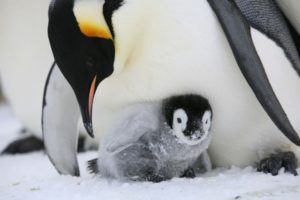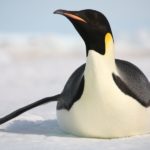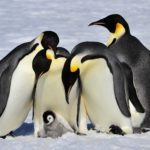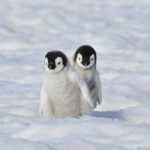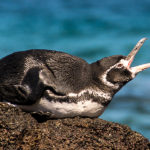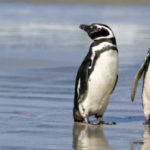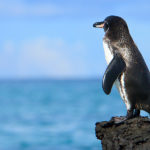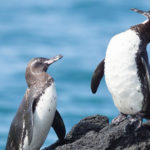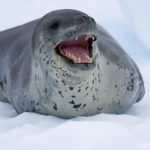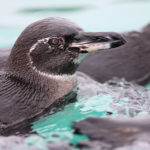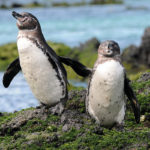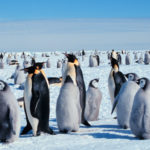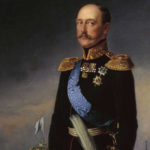Facts about emperor penguins
 The emperor penguin is the largest and heaviest penguin penguin from the penguin family (the average height is about 122 cm, and the weight varies between 22 and 45 kg).
The emperor penguin is the largest and heaviest penguin penguin from the penguin family (the average height is about 122 cm, and the weight varies between 22 and 45 kg).- Like all penguin, emperor penguins can not fly.
- Muscular mass of the emperor penguin is the largest of all kinds of birds (mainly due to the pectoral muscles).
- The emperor penguin of all kinds of penguins goes further south.
- Approximately 300,000 individuals of the emperor penguin live on ice floes around Antarctica.
- The emperor Penguin hunts exclusively in the ocean (feeds on fish, squid and krill).
- Under the water, the emperor penguins can be up to 15 minutes.
- Emperor penguins move at a speed of 3-6 km / h and fall under the water to a depth of 535 meters.
- Often, the emperor penguins move on their belly, working with their paws and wings.
- About 2 months a year, the emperor penguins spend in the sea, and the rest of the time is spent on the continuation of the genus.
- The emperor penguin, despite its proud appearance and name, is a very cautious and even a shy bird. Many attempts to ring it did not succeed, because when the potential danger approached, such panic began that the penguins scattered, throwing eggs and chicks.
- Emperor penguins begin to multiply in May-June, when in their habitats the temperature drops below -50 ° C, and the wind blows at a speed of up to 200 km / h.
- Emperor penguins live up to 25 years.
- The natural enemies of the emperor penguin are – killer whales and sea leopards.
- Emperor penguins live in colonies (the colony can consist of 10,000 birds).
